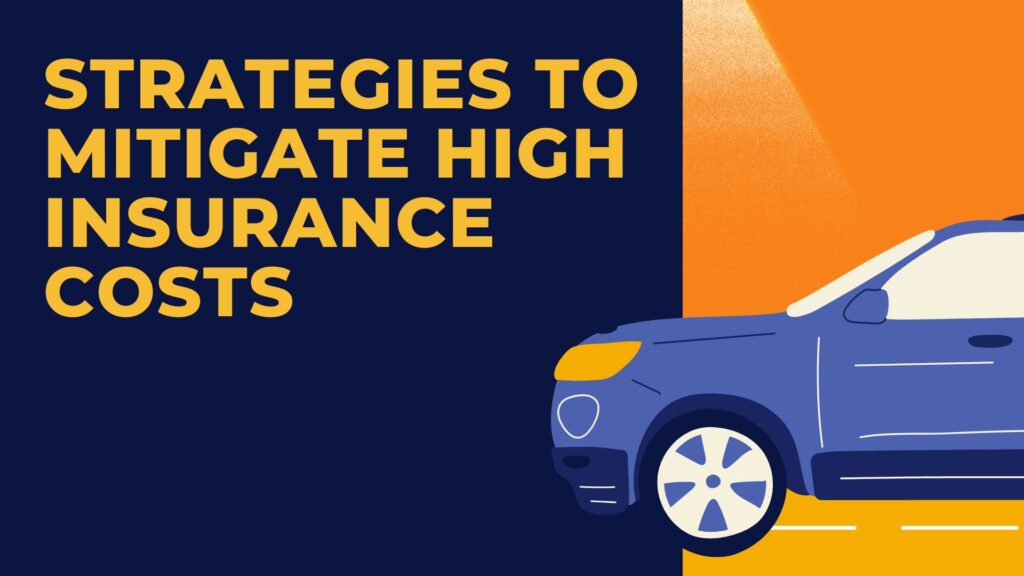Car insurance is a necessary expense for drivers around the world. It provides financial protection against various risks associated with owning and operating a vehicle. However, the cost of car insurance can vary widely depending on several factors. Understanding what influences these costs and how to manage them effectively can help you make informed decisions when choosing car insurance. In this comprehensive guide, we’ll explore the factors that determine car insurance premiums, provide tips on how to save money, and address frequently asked questions to demystify this essential aspect of vehicle ownership.
Table of Contents
- Introduction
- Factors Affecting Car Insurance Costs
- Location
- Age and Gender
- Driving History
- Type of Vehicle
- Coverage and Deductibles
- Credit Score
- Annual Mileage
- Marital Status
- Tips to Save Money on Car Insurance
- FAQs About Car Insurance Costs
- Conclusion
Introduction
Car insurance is an essential financial safeguard for drivers, offering protection against various risks such as accidents, theft, and liabilities. While it’s a necessity for all vehicle owners, the cost of car insurance can vary significantly based on several factors. Understanding these factors and their impact on premiums is crucial for making informed decisions when selecting an insurance policy. This comprehensive guide delves into the various elements that influence car insurance costs, provides practical tips to save money, and addresses common questions to enhance your understanding of this important aspect of vehicle ownership.

Factors Affecting Car Insurance Costs
1. Location
The geographical location where you reside plays a pivotal role in determining your car insurance premiums. Urban areas tend to have higher premiums compared to rural areas due to factors such as higher traffic density, greater incidence of accidents, and increased risk of vehicle theft. Additionally, areas prone to natural disasters or severe weather conditions may also experience higher insurance costs.
2. Age and Gender
Age and gender significantly impact car insurance rates. Younger drivers, particularly those under 25 years old, are considered high-risk by insurers due to their relative lack of driving experience and higher likelihood of being involved in accidents. As a result, premiums for young drivers are typically higher. Gender also plays a role, with young male drivers generally facing higher insurance costs compared to young females, although this discrepancy tends to diminish with age.
3. Driving History
Your driving record is a critical factor that insurers consider when determining premiums. A clean driving history, characterized by a lack of accidents, traffic violations, or claims, demonstrates responsible driving behavior and reduces the perceived risk for insurers. In contrast, drivers with a history of accidents or multiple violations may face higher insurance premiums as they are viewed as higher risk.
4. Type of Vehicle
The make, model, and year of your vehicle significantly influence insurance costs. Insurers assess the risk associated with your vehicle based on factors such as its market value, repair costs, safety features, and likelihood of theft. High-performance cars, luxury vehicles, and models with expensive parts or specialized repair requirements generally attract higher premiums due to the increased cost of repairs or replacements.
5. Coverage and Deductibles
The level of coverage you choose and your deductible amount directly impact your insurance premiums. Liability coverage, which covers damages and injuries caused to others in an accident, is typically mandated by law. However, optional coverages such as collision and comprehensive insurance, which cover damage to your vehicle from collisions, theft, vandalism, and natural disasters, can significantly increase premiums. Opting for higher coverage limits and lower deductibles provides greater financial protection but also results in higher premiums because insurers assume greater financial risk.
6. Credit Score
In many regions, insurers use credit scores as a factor in determining insurance premiums. Studies have shown a correlation between credit history and insurance risk, with individuals with higher credit scores generally exhibiting lower risk behaviors. Therefore, maintaining a good credit score by managing debts responsibly, paying bills on time, and monitoring your credit report can potentially lead to lower car insurance premiums.

7. Annual Mileage
The number of miles you drive annually influences your insurance costs. Drivers who commute long distances or use their vehicles frequently are at a higher risk of being involved in accidents, leading insurers to charge higher premiums to mitigate this increased risk. Conversely, drivers who drive fewer miles annually may qualify for lower premiums through usage-based insurance programs that assess premiums based on actual mileage driven.
8. Marital Status
Marital status can impact car insurance premiums, with married individuals often benefiting from lower rates compared to single drivers. Insurers perceive married couples as more stable and statistically less likely to engage in risky driving behaviors. As a result, married drivers may qualify for discounts or lower premiums, particularly when they bundle insurance policies with their spouse.
Tips to Save Money on Car Insurance
1. Shop Around
Comparing quotes from multiple insurance providers is one of the most effective ways to find affordable car insurance. Insurance premiums can vary significantly among insurers, so obtaining and comparing quotes online or through an insurance broker allows you to identify the best coverage options at competitive rates.
2. Bundle Policies
Many insurance companies offer discounts for bundling multiple insurance policies, such as car insurance with homeowners or renters insurance. Bundling policies not only simplifies insurance management but also provides an opportunity to save money through discounted premiums on each policy.
3. Increase Deductibles
Opting for a higher deductible can lower your car insurance premiums. A deductible is the amount you must pay out-of-pocket before your insurance coverage kicks in to cover damages. By choosing a higher deductible, you assume more financial responsibility in the event of a claim, which typically results in lower premiums.
4. Drive Safely
Maintaining a clean driving record is essential for minimizing car insurance costs. Safe driving behaviors, such as obeying traffic laws, avoiding distractions while driving, and adhering to speed limits, reduce the likelihood of accidents and traffic violations. Many insurers offer discounts or rewards for drivers with a history of safe driving, encouraging continued adherence to safe driving practices.
5. Consider Usage-Based Insurance
Usage-based insurance programs, also known as telematics or pay-as-you-drive insurance, assess premiums based on your actual driving habits and behaviors. Insurers use technology such as GPS tracking or mobile apps to monitor factors such as mileage, speed, braking, and acceleration patterns. Drivers who demonstrate safe driving habits and drive fewer miles may qualify for lower premiums through usage-based insurance programs.
6. Maintain Good Credit
In regions where credit scores are considered, maintaining a good credit score can lead to lower car insurance premiums. Insurers use credit scores as a predictive measure of risk, with individuals demonstrating responsible credit management and financial stability often receiving lower insurance premiums. To maintain a good credit score, pay bills on time, keep credit card balances low, and monitor your credit report regularly for accuracy.

FAQs About Car Insurance Costs
Q: Why do younger drivers pay more for car insurance? A: Younger drivers, particularly those under 25 years old, are statistically more likely to be involved in accidents due to their relative lack of driving experience and higher risk-taking behaviors. As a result, insurers charge higher premiums to offset this increased risk.
Q: Can I negotiate my car insurance premium? A: While insurance premiums are generally not negotiable in the traditional sense, you can explore opportunities to lower your premiums by comparing quotes from multiple insurers, adjusting coverage options, and taking advantage of available discounts. Some insurers may offer discounts for loyalty, safe driving, or bundling policies.
Q: How often should I review my car insurance policy? A: It’s advisable to review your car insurance policy annually or whenever significant life changes occur, such as moving to a new location, purchasing a new vehicle, or experiencing changes in driving habits. Reviewing your policy allows you to ensure you have adequate coverage and identify opportunities for potential savings through discounts or policy adjustments.
Q: Does my credit score affect my car insurance rates? A: In many regions, yes. Insurers may consider your credit score as a factor when calculating car insurance premiums. Studies have shown a correlation between credit history and insurance risk, with individuals demonstrating higher credit scores often receiving lower premiums due to perceived lower risk behaviors.
Q: Are there discounts available that I might not know about? A: Yes, insurance companies offer various discounts that can help lower car insurance premiums. Common discounts include safe driver discounts for maintaining a clean driving record, multi-policy discounts for bundling car insurance with other insurance policies, and discounts for completing defensive driving courses or being a member of certain professional organizations. It’s worth asking your insurance provider about available discounts to maximize potential savings.
Conclusion
Understanding the factors that influence car insurance costs and implementing strategies to manage and reduce these costs is essential for every driver. By considering factors such as location, age, driving history, vehicle type, coverage options, and credit score, you can make informed decisions when selecting car insurance that meets your needs and budget. Moreover, exploring opportunities to save money through comparison shopping, bundling policies, adjusting deductibles, maintaining safe driving habits, and leveraging available discounts can lead to significant long-term savings on car insurance premiums.
Whether you’re a new driver exploring insurance options or a seasoned driver looking to optimize costs, this guide equips you with the knowledge and tools needed to navigate the complexities of car insurance effectively. By following these tips, staying informed about insurance trends and regulations, and periodically reviewing your policy, you can ensure you’re adequately protected on the road while minimizing the financial impact of car insurance costs. With careful planning and informed decision-making, you can secure affordable and comprehensive car insurance coverage that provides peace of mind and financial security for your driving journey ahead.